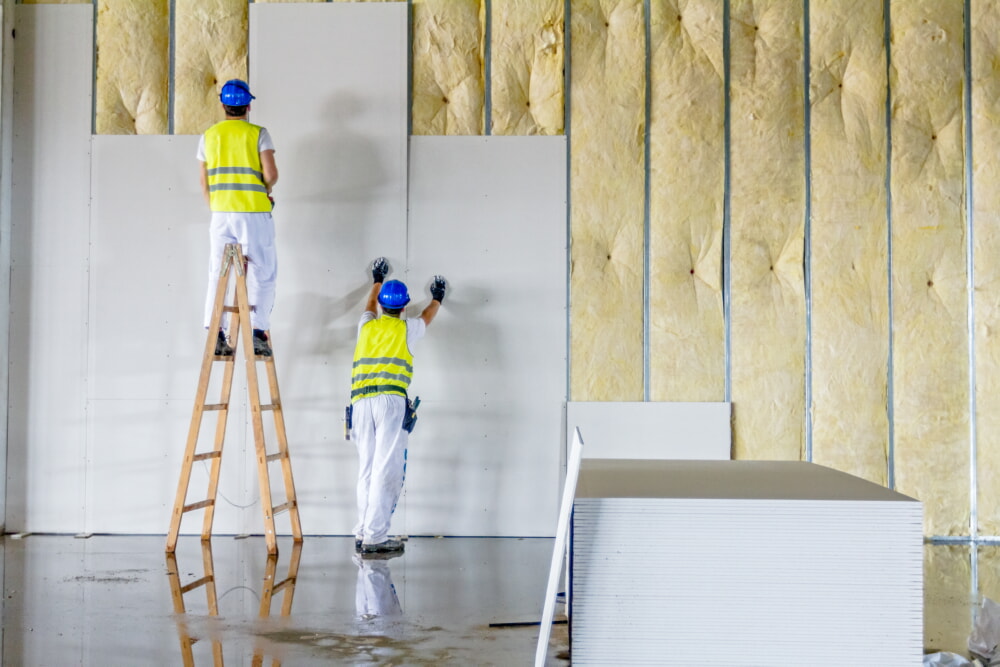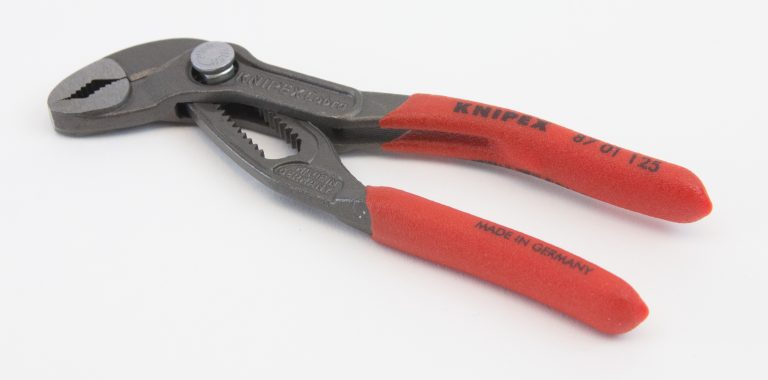Drywall Industry
Hand Tools

Drywall Industry
The drywall industry is a subset of the construction industry. You’ll find drywall in residential homes, office buildings, retail establishments, and other commercial establishments. According to BLS, the median pay for a drywall installer in 2021 was $48,350 per year. With over 128,000 jobs in that year, BLS expects another 4,000 over the next few years.
Drywall installers, ceiling tile installers, and tapers do not need a formal education, and most receive moderate on-the-job training. It is up to the trainer to educate a new drywall installer on the types of tools and personal protective equipment required to do the job.
Types of Drywall
The type of drywall – commonly referred to as sheetrock – used for a job depends on location and application. The types of drywall include:
- Regular / Standard: This is the drywall you commonly see in residential construction.
- Green: When an area of the building has a lot of humidity, drywall installers use green drywall. You’ll see this in bathrooms and kitchens, as it is moisture-resistant.
- Blue: When you use veneer plastering, it’s better to use blue drywall, as it has excellent absorption.
- Paperless: Instead of using paper, this drywall is protected with fiberglass. It is sturdier than standard drywall.
- Purple: When you need that extra resistance against mold, mildew and moisture, such as in beach homes, use purple drywall.
- Type X: Mostly used in kitchens, Type X drywall has a high resistance to fire and helps keep it from spreading.
- Soundproof: This drywall is laminated and dampens sound. It’s suitable to use in the construction of bars, taverns, or even office buildings.
DIY: Drywall Repair
While drywall looks great and makes it easy to change the look of a room, it is also easy to damage. Leaking pipes, bashing into walls, or even a piece of furniture falling into a wall while you move it can put a hole in the drywall. Knowing how to repair drywall can save you a ton of money – and it’s not very difficult – just time-consuming.
- Cut around the damage, so it’s even. Working with squares or rectangles is the easiest. It’s best to cut the hole bigger and make sure you make the cuts in the center of the two closest studs.
- Cut a new piece of drywall and nail it to the studs.
- Mud the seams. Apply it with a scraper as smoothly as possible.
- Apply the drywall tape to the wet mud, ensuring the seam is in the middle of the tape.
- Pull the scraper over the tape from left to right on horizontal seams and top to bottom on vertical seams. Let the mud dry.
- Using the scraper, gently remove any bumps.
- Apply the second coat of mud. Let it dry.
- Apply the third coat of mud. Let it dry.
- Sand the joint so that it’s smooth.
- Paint or install other wall coverings.
Types of Drywall and Ceiling Contractors
The drywall industry has several types of drywall contractors, including:
- Drywall installers: Cut and hang the drywall.
- Ceiling installers: Cut and hang material to ceilings.
- Tapers: Prepare the hung drywall for paint and other wall coverings.
List of Tools and Materials
Some of the most common drywall tools that every drywaller should have in his or her toolbox include:
- Anchors.
- Drywall cart.
- Drywall lift.
- Joint compound.
- Drywall tape.
- Jab saw.
- Drywall nails.
- Screwdrivers.
- Variety of knives (scrapers), including 4-inch, 6-inch and 12-inch knives.
- Mud pan.
- Power saw.
- Primer.
- Sander.
- Screws.
- Scrapers.
- Sanding sponge and sanding pole.
- Snips.
- Tape measure and other measuring tools.
- Brushes.
- Taping knife.
- Trowel.
- T-square.
- Utility knife.
Drywallers can find many of these tools at Abolox. We carry quality hand tools from known brands.
List of Activities
Drywallers perform various tasks. Some of them could cause injury if they are not wearing the proper personal protective equipment or working with care. Some of the activities a drywaller does include:
- Apply sealants, adhesives, mortar and plaster.
- Clean and prep areas.
- Cut drywall, metal, wood and tile.
- Cutting openings and drilling holes.
- Fastening drywall and panels with glue and screws.
- Filling screw holes and cracks with compound.
- Finishing walls.
- Hanging panels.
- Installing ceiling tiles, trim, insulation, lath, wood, metal and panels.
- Measuring materials.
- Mixing substances.
- Patching.
- Preparing wall surfaces.
- Removing excess mud and other material.
- Removing old walls.
- Sanding and sealing joints.
- Smoothing surfaces.
- Taping joints.
Safety
Accidents and injuries are common in the drywall industry, especially hand injuries. Wearing the proper personal protective equipment (PPE) can significantly reduce the risk of injury. Abolox carries PPE for drywall installers and others in the construction industry.
The PPE a drywall installer should wear includes:
- Goggles, safety glasses and face protection.
- Hi-vis clothing.
- Steel toe boots.
- Work gloves to protect against cuts, impact, and chemicals.
Visit Abolox
Whether you need tools and personal protective equipment for yourself or your contractors, Abolox has what you need. We carry quality tools and personal protective equipment from known brands.
You can purchase many items in bulk or individually. If you don’t see what you need in our online store, contact us, and we’ll source it for you.



